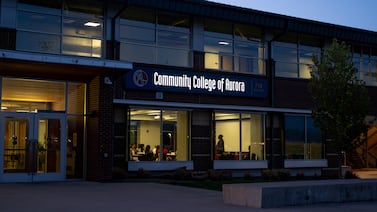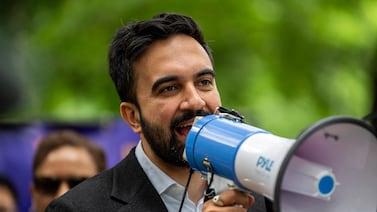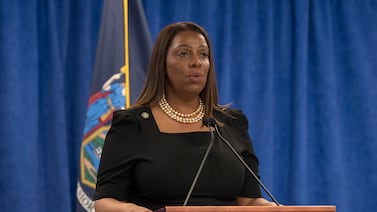Sign up for Chalkbeat Colorado’s free daily newsletter to get the latest reporting from us, plus curated news from other Colorado outlets, delivered to your inbox.
Colorado looks set to avoid potentially drastic cuts to school funding, after state lawmakers struck a deal this week to try to get two property tax measures off the November ballot.
The deal struck in special session on Thursday would reduce property tax revenue by about $255 million in its first year, and cost public schools local tax revenue. But it would also require the state to backfill reduced funding for schools with about $88 million in state money in 2025 and $100 million in 2026.
The bipartisan compromise would also ensure Colorado can move ahead with plans to implement a new school funding formula next year that aims to provide more support for rural districts and groups of students like English learners and students from low-income backgrounds.
While the deal would cut some revenue that schools draw on, many lawmakers and education groups saw such an agreement as the lesser of two evils. That’s because if voters were to approve the two measures on the ballot later this year, the consequences for state tax revenue — and therefore for schools — could be monumental.
One of the two measures, Initiative 50, would cut property taxes by up to $1 billion by its third year of implementation. Meanwhile, Initiative 108 would cut property assessment rates and require the state to backfill lost revenue for county governments.
The new formula would also be jeopardized by such impacts on tax revenue, officials said.
The two groups behind the measures, however, said they would agree to take them off the November ballot if lawmakers struck their own deal to cut taxes first.
Many officials, including Democratic Gov. Jared Polis, cast this week’s special session as a way to protect school funding.
“Is this a move to play defense?” said House Speaker Julie McCluskie before one of the week’s votes on the deal. “You bet it is.”
When the special session ended with a deal Thursday, Polis declared victory.
“We are saving hardworking Coloradans money on property taxes, saving households money on utility bills, making our small businesses more competitive, and protecting funding for our schools,” he said in a statement.
Polis said he will sign the deal once the two tax measures, known as Initiative 50 and Initiative 108, are pulled off the November ballot by Advance Colorado and Colorado Concerns.
On Thursday, Advance Colorado said in a news release it will work with the governor to start the process of removing the ballot measures.
“For two years, we have said the solution taxpayers need is to cut taxes significantly and then put a cap in place so Colorado can avoid this crisis in the future,” Advance Colorado President Michael Fields said in a statement. “This bill gets that job done.”
Lawmakers already approved more than $1 billion in relief in this year’s regular session that ended in May. Some Democrats were frustrated about Polis calling the special session after providing that relief.
But school districts, colleges, and universities — as well as groups like the Colorado Education Association and the Colorado Children’s Campaign — lobbied in favor of the bill during the week. Municipal and county officials also urged lawmakers to reach an agreement.
What the property tax deal does for schools
The deal reduces residential property tax assessment rates for lodging in 2024 and then most other types of property in 2025. The deal also cuts property taxes collections to local governments by about $255 million in its first year.
The bill lowers assessment rates overall but keeps local assessment rates for schools higher than other assessment rates. The deal ensures that districts won’t face large drops in county funding.
Although schools are expected to lose local revenue from this deal, the state must backfill the bulk of the projected revenue losses.
In addition to hampering the revised school funding formula, the two ballot measures would force the state to revive the practice of borrowing money from schools to pay for other initiatives, officials said.
The new formula, the first major revamp to school funding since 1993, calls for the state to infuse $500 million into K-12, starting in the 2025-26 school year.
Sen. Rachel Zenzinger, an Arvada Democrat, said she’s confident in the budget for K-12 in light of the agreement.
“I was intent on coming back and finding a compromise to avoid what I know was going to be pretty devastating impacts to education,” she said. “I was uncomfortable gambling with our children’s futures.”
Colorado Education Association President Kevin Vick said in a statement that the bill offers long-term relief and a stable source of funding for schools.
Higher education would also face serious cuts through the ballot measures.
Historically, tuition increases have been used to make up for reduced funding. But that strategy increases the burden on students and families, especially when Colorado families already face higher tuition compared to people in other states.
Leaders from the Community College of Aurora, for example, predicted that if voters were to approve the ballot measures, the school might have to increase tuition rates by over 50%.
Jason Gonzales is a reporter covering higher education and the Colorado legislature. Chalkbeat Colorado partners with Open Campus on higher education coverage. Contact Jason at jgonzales@chalkbeat.org.






